The Smaller Yet Significant Things
Quality Assurance/Process Lab:
During every stage of the manufacturing process, a sample is taken and tested at the dedicated laboratory. The raw materials like butyl rubber, latex and then the rubber that emerges from Mixing and Extrusion is tested for every new batch. Even the fabric and steel cords are tested for strength. Sulphur, Carbon Black, Silica and other chemical oils are all tested before they are cleared to be used for mixing. Rubber samples are tested using special instruments like a Mooney Viscometer or Rheometer.
In the foreground; samples that are tested on a daily basis. In the background; the Mooney Viscometers (left) and Rheometers (right) that are used to test the viscosity of the samples:

The Rheometer applies pressure on the sample and heats up the rubber. A spindle is then inserted and a motor tries to turn the sample. The torque registered on the plate at the bottom determines the viscosity. A Rheometer has additional measurements that a Mooney Viscometer is not capable of.
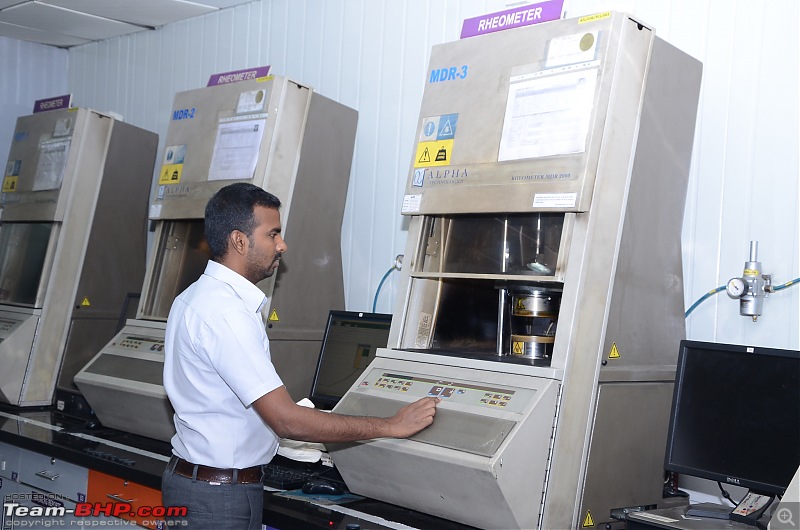
Different types of gauges for measurement:
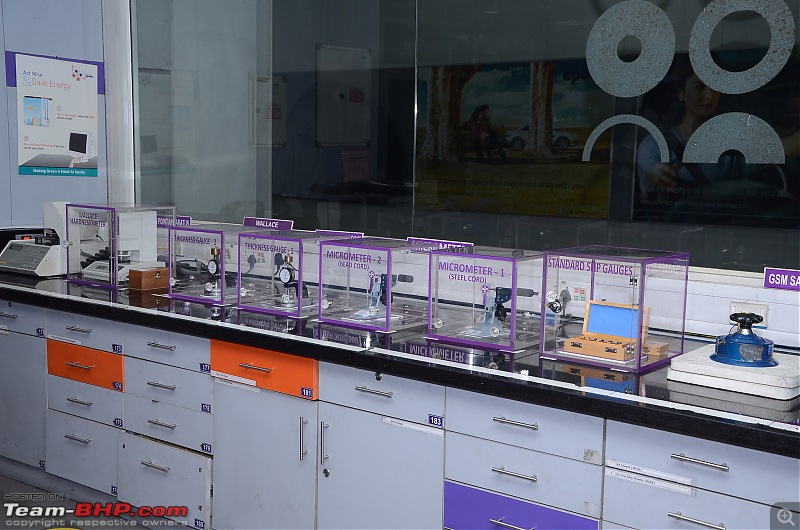
A moulding press. It is used to cure standard test pieces, so that testing of the compound properties can be performed on them (
Credit to BHPian AbhiJ for pointing this out):

An oven that accelerates the wear rate to determine tyre life:

This machine tests the tensile strength of the bead wire or any of the other steel wires:
 Utilities:
Utilities:
Any large plant like this will need massive utilities. I was pretty amazed at the size of the Diesel Generators for backup power. Being in India, power cuts are to be expected. Due to the location (SEZ), power cuts are not as frequent and on most occasions are planned with the plant given a heads up. Nonetheless a power interruption can cause havoc in the plant. Imagine a power cut while curing or mixing at an high pressure, the entire batch will be ruined and will need to be thrown away due to the process disturbance. Critical areas of the plant that will lead to wastage of products are backed up by massive diesel generators, each the size of a small house.
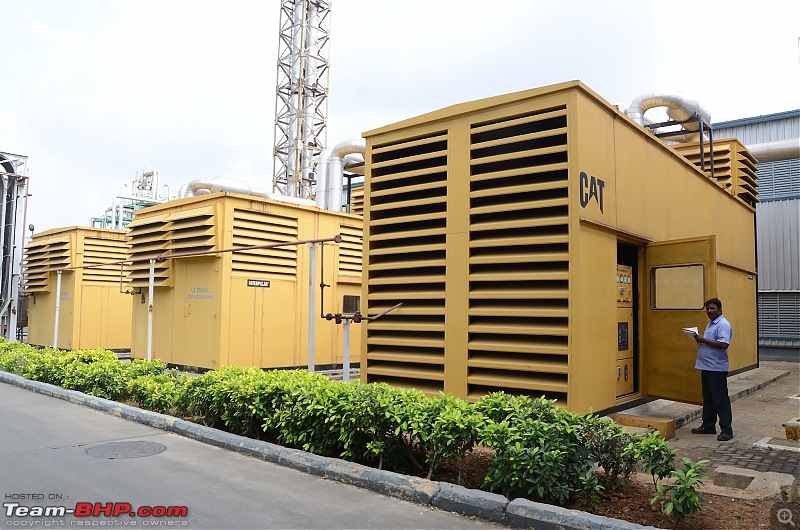
As mentioned earlier, the plant follows a unique design. Since there are 2 manufacturing lines, one for Truck Bus Radials and other for passenger cars. Since both need utilities such as power, chilled water and compressed air, the plant has a central spine that houses these utilities. On either side of the spine are the manufacturing lines.
Chilled water plant for cooling:

On some occasions when there is a water shortage, the plant shifts to air cooling but this is very power intensive so is only kept as a backup:

• The entire operation of the plant can be monitored from a central control room. You can check power, water, status of every machine, instantaneous power consumption. The system is known as SCADA (supervisory control and data acquisition).


• Apart from these, there is a steam plant and water treatment plant. These are not in the centre spine as they take up a lot more space.
• The plant has several canteens spread out to reduce the time taken for walking towards a central canteen. Due to the sheer size of the plant, it can get pretty exhausting walking inside the plant. Moreover, we were required to wear metal shoe caps as a safety measure and a fluorescent jacket. Our feet were aching towards the end of the day!
• There's even a library that houses various car magazines as well as a desktop to browse through sites like Team-BHP

. A knowledge sharing room has several papers written in international conferences.
• The plant is involved several CSR activities like HIV/AIDS awareness, eye checkups, waste management, upgrading skills of the residents in nearby villages (e.g. teaching truck driving).
• Since the plant operates 24x7 and uses a fleet of forklifts running around, there is a dedicated forklift service station. There's even a battery charging station. The batteries are charged separately and are swapped out with the batteries in the charging station. No downtime for charging at all.
• The plant focuses heavily on safety. They follow a different model known as BBS (Behaviour Based Safety). This concentrates more on the employees behaviour rather than training for safety. Basically an employee who is clumsy or not careful is bound not to be safe no matter how much training is given. They look at why people do what they do, and then look at ways to prevent it. More on
BBS.



 (43)
Thanks
(43)
Thanks

 (39)
Thanks
(39)
Thanks

 (29)
Thanks
(29)
Thanks

 (39)
Thanks
(39)
Thanks

 (40)
Thanks
(40)
Thanks

 (69)
Thanks
(69)
Thanks

 (4)
Thanks
(4)
Thanks
 (1)
Thanks
(1)
Thanks
 (1)
Thanks
(1)
Thanks

 (1)
Thanks
(1)
Thanks
 (6)
Thanks
(6)
Thanks
 (1)
Thanks
(1)
Thanks
 (1)
Thanks
(1)
Thanks

 (4)
Thanks
(4)
Thanks
 (1)
Thanks
(1)
Thanks



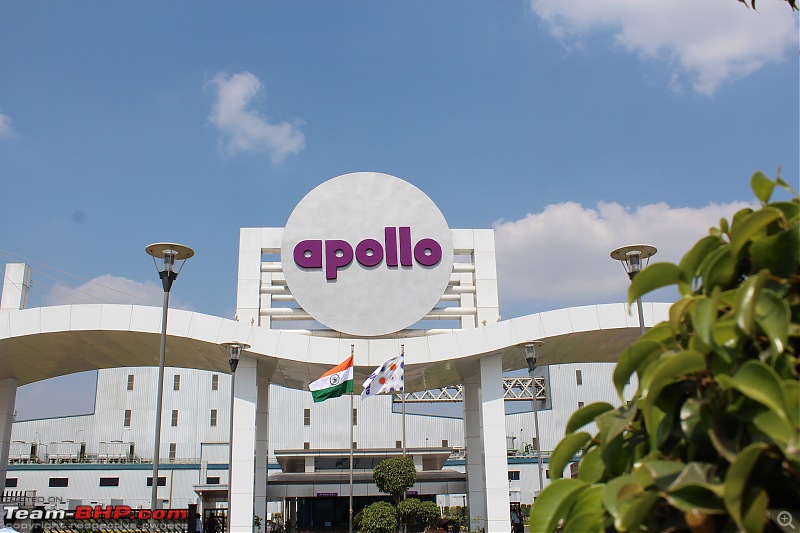
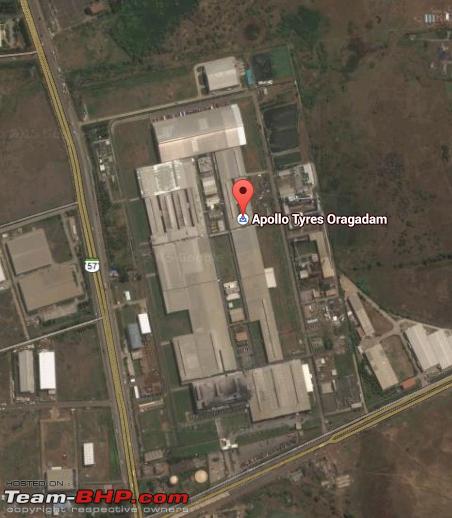







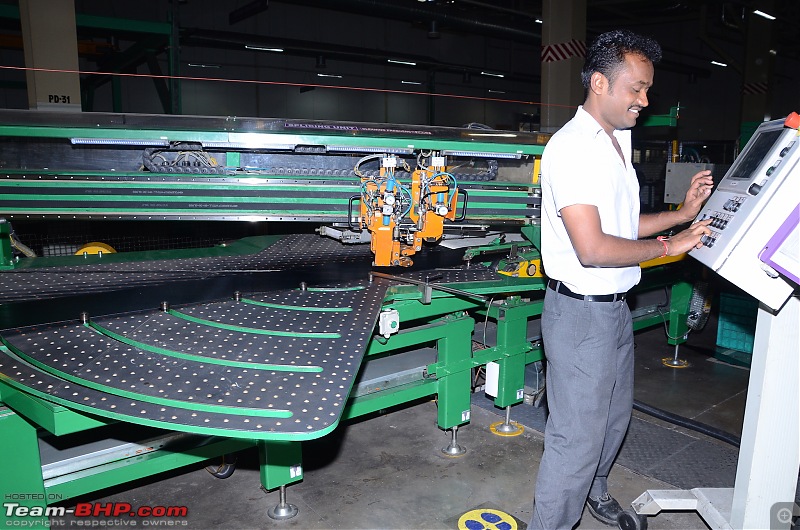





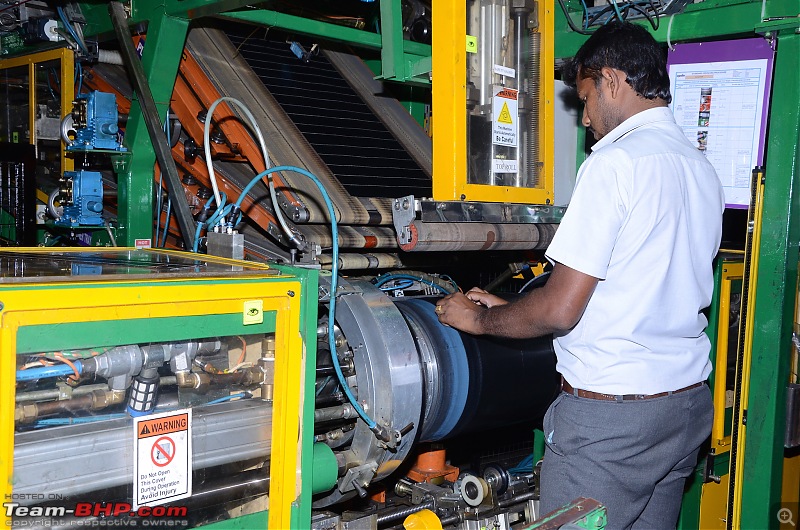
























 . A knowledge sharing room has several papers written in international conferences.
. A knowledge sharing room has several papers written in international conferences.

 . Rating thread a well-deserved 5 stars!
. Rating thread a well-deserved 5 stars!